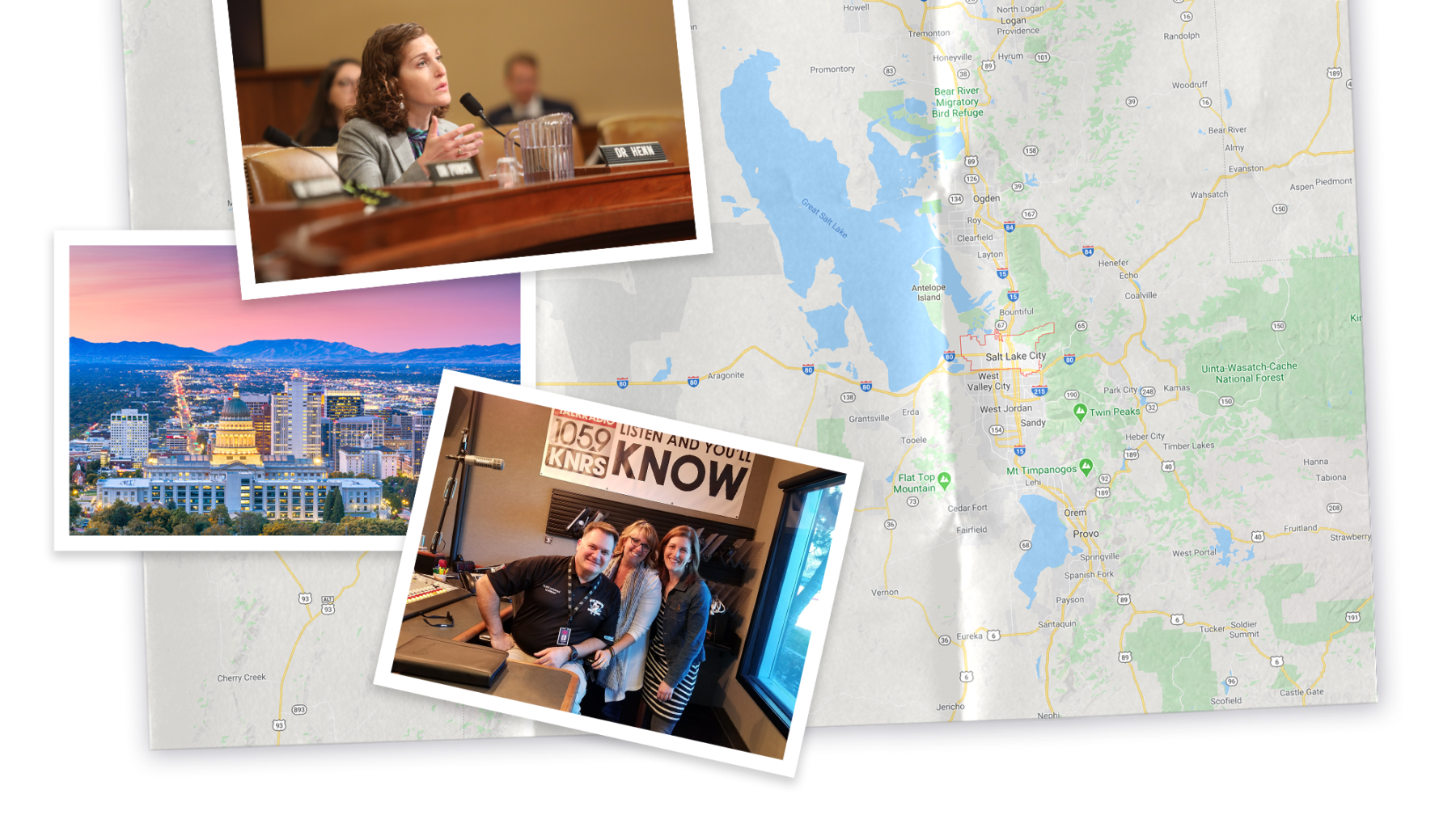
Morissa Sobelson Henn develops, supports, and implements suicide prevention strategies in Utah, including testifying on suicide prevention for the Committee on Ways and Means.
Photos courtesy of the United States House of Representatives Committee on Ways and Means and from iStock
Saving lives, together
“I have never been involved in a topic where I had more hope and more energy and more reason for optimism.”
It was a warm July evening in Utah and Morissa Sobelson Henn, Dr.P.H. ’19, found herself sitting in a packed auditorium a few miles south of Salt Lake City. The room was tense. Gun-control activists were hosting a town hall, and gun-rights groups in the politically conservative state had come out to protest.
As the event concluded, Henn, a gun safety proponent, did something a little different. Instead of going to speak with the gun-control group, she walked over to the gun rights activists and thanked them for coming to engage on the topic. They thanked her for coming to speak with them as well, before everyone left for the evening.
Reaching out to people with diametrically opposing views on emotionally challenging topics is vital to the success of Henn’s work. As a graduate of the Harvard T.H. Chan School of Public Health and program director for suicide prevention and mental well-being efforts at Utah-based Intermountain Healthcare, she firmly believes bringing people together can help save lives.
“If we’re going to come together on what is one of the most politically divisive issues of our time, suicide is where this bridge can actually be built, because the gun-owner community is disproportionately affected by the issue of suicide, and they hold strong values around protecting loved ones,” she said. She attributes much of her understanding of this approach, and its underlying public health evidence, to the pioneering work of her mentors at the Harvard Injury Control Research Center.
“Two-thirds of gun deaths in the U.S. are suicides,” she said. “Here in Utah and in other high-gun states, it’s 85 percent.” From 2016 to 2018, Utah had the fifth highest suicide rate in the nation, a majority of which were caused by firearms.
Gun-rights supporters have indeed become actively involved in the issue, and some of Henn’s closest partners are staunch activists, thirsty for data on firearm availability and suicide rates. They work with Intermountain and its community partners to get the latest information on trends, risk factors, and effective messaging strategies. In turn, Henn depends on them to help craft effective messages and outreach strategies.
Personal stories of suicide in the community have also driven gun owners to engage on the issue.
“Suicide doesn’t discriminate,” Henn said, as she recalled stories of gun owners who shifted their thoughts on firearm access after losing someone close to them. Many go on to help educate others on the importance of reducing access to guns for people at risk. She compares the approach to taking the keys from a friend who has been drinking, a form of harm reduction.
“The tragedy of suicide can connect people from very different backgrounds, and from that collective grief a common goal and purpose seems to emerge,” she said.
Henn and her team have already made meaningful progress. They successfully helped push several initiatives across the finish line, including developing and implementing a program that has educated over 1000 Utah health-care providers on how to talk to at-risk patients about access to guns, making free gun locks available in pharmacies, clinics, and hospitals across the Mountain West region, and most recently, launching a $2 million campaign with gun rights, government, and faith leaders aimed at improving gun storage behaviors.
Looking to the future, Henn sees a path to ensuring that fewer people take their own lives with a firearm. The evidence is promising. Thanks largely to reductions in the number of firearm suicides, Utah’s suicide rate has declined slightly during the last two years — which is notable, especially since the suicide rate in the U.S. as a whole continues to increase.
“I have never been involved in a topic where I had more hope, energy, and reason for optimism,” she said. “I hope that in 10 years, we will have advanced to a new social norm: that no person who is in a suicidal crisis has access to a firearm.
“That’s the dream, and I think we’re really starting to make progress.”
This story is part of the To Serve Better series, exploring connections between Harvard and neighborhoods across the United States.




